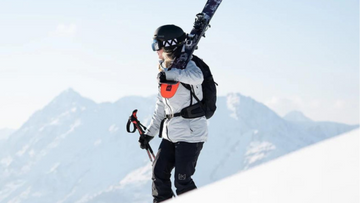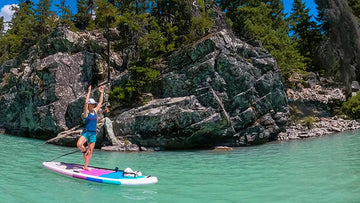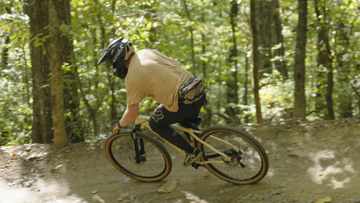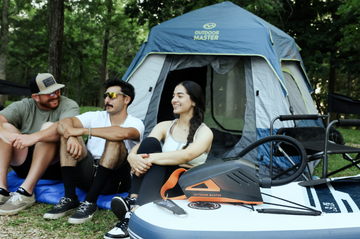Gear Maintenance 101: How to Take Care of Your Outdoor Master Equipment
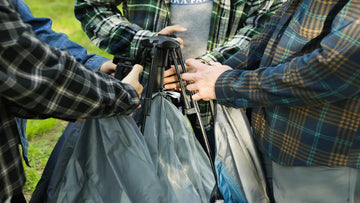

Welcome to Gear Maintenance 101, where we'll explore the essential tips to keep your Outdoor Master equipment in top-notch condition. Proper maintenance not only extends the lifespan of your gear but also ensures optimal performance and safety during your outdoor adventures. Let's dive into each product category and learn how to care for them effectively.
Electric SUP Pumps
Electric SUP pumps are essential for inflating your stand-up paddleboards effortlessly. However, they come with batteries that require special attention. To maintain your Electric SUP Pump:
Battery Safety: Always use the designated charger provided by Outdoor Master to avoid potential hazards. Charge the battery in a dry, cool place, and avoid overcharging. If you notice any signs of damage or malfunction on the battery, replace it immediately to prevent accidents.
Cleaning: Use a damp cloth with mild soap to clean the pump's exterior. Avoid immersing the pump in water or using harsh chemicals that may damage electronic components.
Storage: Store the pump in a dry, dust-free area away from direct sunlight. Extreme temperatures can affect battery performance, so avoid leaving it in a hot car during summer.
Snow Goggles
Skiing/snowboarding goggles protect your eyes and improve visibility on the slopes. Proper maintenance ensures clear vision and extends the life of your goggles:
Lens Cleaning: Use a microfiber cloth to gently remove dust and smudges. If the lens is wet, let it air dry before wiping to avoid scratches. Avoid using paper towels or rough fabrics.
Lens Coatings: Some goggles come with anti-fog or anti-scratch coatings. Avoid wiping the inside of the lens, as it may damage these coatings. Instead, gently shake off excess snow and moisture.
Storage: Keep your goggles in a soft pouch or a dedicated goggle case when not in use. Avoid placing them in your pocket or backpack without protection, as it can lead to scratches.
Helmets (skiing, biking, skateboarding)
Helmets are vital for head protection during various outdoor activities. Remember the following maintenance tips:
Cleaning: Use a mild soap and water solution to clean the helmet's exterior. Remove the padding and wash it separately according to the manufacturer's instructions.
Impact Replacement: After a significant impact or accident, replace the helmet, even if there are no visible cracks. Helmets are designed to absorb a single impact and may no longer provide adequate protection afterward.
Sunglasses
Outdoor Master sunglasses offer eye protection and style. Here's how to maintain them:
Lens Cleaning: Use a microfiber cloth and lens cleaner to remove smudges and debris gently. Avoid using ammonia-based cleaners or rough materials that can scratch the lens.
Lens Coatings: Some sunglasses have polarized or anti-reflective coatings. To preserve these coatings, avoid using abrasive cleaners or wiping the lenses with clothing.
Storage: Keep your sunglasses in a protective case when not in use. Avoid leaving them exposed to extreme heat or placing them with heavy items that could cause damage.
Beach Shades (umbrella, cabana, pop-up tent) with UV Coating
Beach shades with UV coating offer essential sun protection. Here's how to maintain them:
Cleaning: Use a mixture of mild soap and water to clean the shade's surface. Gently scrub with a soft brush or cloth to remove dirt and sand.
UV Coating Maintenance: UV coatings may wear off over time. If you notice increased sun exposure or fading of colors, it's time to consider replacing the shade for better protection.
Camping Tent with Blackout Coating
Camping tents with blackout coating provide darkness for better sleep. Follow these tips to maintain the coating:
Cleaning: Use a soft brush or cloth to remove dirt and debris from the tent's exterior. For stubborn stains, use a mild detergent solution.
Blackout Coating Care: The blackout coating can deteriorate with frequent use and exposure to the elements. If you notice light leakage or loss of blackout effectiveness, it may be time to consider reapplying the coating or replacing the tent.
iSUP Boards
Inflatable stand-up paddleboards require regular care to stay in excellent condition. While specific maintenance may vary depending on the board's materials, here are some general tips:
Cleaning: Rinse the board with fresh water after each use, especially if used in saltwater. Use a soft brush or cloth to remove dirt and grime.
Storage: Avoid storing the board in direct sunlight or extreme temperatures. Deflate the board partially for storage to relieve pressure on seams and valves.
Repair: For minor punctures or leaks, use the repair kit provided by Outdoor Master to patch the board. For major damages, contact customer support for assistance.
Snow Gloves
Keep your Snow Gloves in top shape for winter adventures with these maintenance tips:
Cleaning: Hand wash with cold water and mild soap. Avoid using harsh detergents that could damage the gloves' materials. Gently squeeze out excess water and let them air dry.
Storage: Store gloves in a cool, dry place away from direct sunlight. Avoid placing them near heat sources, as extreme temperatures can affect the glove's performance.
Repair: For small tears or loose threads, use a needle and thread to mend the gloves. For more significant damages, consider contacting customer support for professional assistance or replacement options.
Snow Socks (Merino Wool and Cotton)
Proper care ensures your Snow Socks stay cozy and durable. Follow these guidelines based on the sock material:
Merino Wool Socks:
Cleaning: Hand wash with cold water and mild detergent specifically designed for wool. Avoid using bleach or fabric softeners. Gently squeeze out excess water and reshape while damp.
Storage: Store socks in a well-ventilated area. Avoid direct sunlight and excessive humidity, as it can lead to mold and mildew growth.
Repair: For small holes or snags, use a patch or darn the socks with matching wool yarn. Replace socks if the damage is extensive or affects their performance.
Cotton Snow Socks:
Cleaning: Machine wash on a gentle cycle with cold water and mild detergent. Turn socks inside out before washing to protect the fabric. Avoid using bleach.
Storage: Store socks in a dry, cool place. Make sure they are completely dry before storing to prevent musty odors.
Repair: For small tears or loose threads, use a needle and thread to mend the socks. If the damage is beyond repair, consider replacing them with new ones.
Conclusion
Remember, proper gear maintenance not only ensures longevity but also enhances your overall outdoor experience. Always refer to the manufacturer's instructions and follow these guidelines to keep your Outdoor Master equipment performing at its best. Happy exploring!


